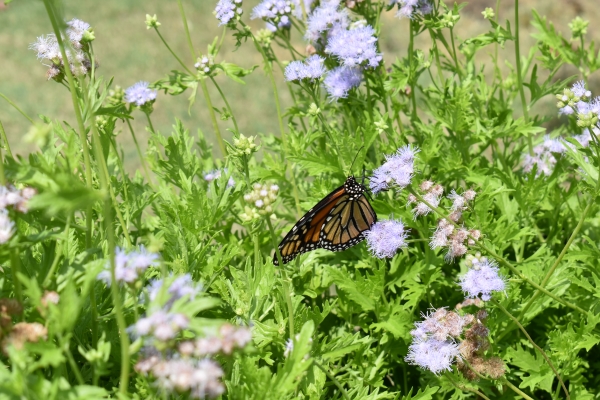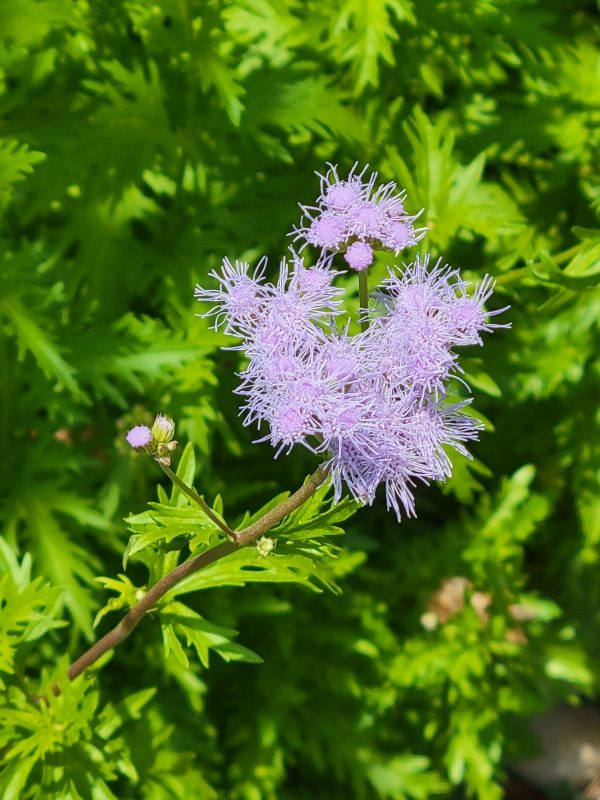Editor’s Note: Blue Ribbon News is pleased to welcome ‘Here We Grow: Tips from Rockwall County Master Gardeners’ as an exclusive new feature in our publication. This guest column and photos by Michele Campbell, President, Rockwall County Master Gardener Association.
 ROCKWALL, TX (March 25, 2024) – As spring weather arrives, it’s time for the usual gardening tasks. While you might be eager to dig in, there are ways to streamline spring gardening to make it more efficient, cost-effective, and water-wise.
ROCKWALL, TX (March 25, 2024) – As spring weather arrives, it’s time for the usual gardening tasks. While you might be eager to dig in, there are ways to streamline spring gardening to make it more efficient, cost-effective, and water-wise.
Soil preparation
Assess soil and amend, if necessary, with organic matter such as compost to improve soil structure, fertility, and drainage. Consider expanded shale for improved drainage and aeration, especially for plants that struggle with our black clay. For acid-loving plants like azaleas and hydrangeas, consider acidifying agents to lower the soil pH. Alternatively, opt for native plants! They thrive in poor soil conditions and are adapted to our local soil, eliminating the need for amendments.
Fertilization
This is the time of year to apply a balanced fertilizer to your garden beds. Plants need these essential nutrients as they begin to actively grow in spring. Alternatively, opt for native plants! Native plants usually do not require fertilizer. They need nutrients just like any other plant, but they are able to get the nutrients they need from the native soil.
Pruning
The recommendations for pruning vary based on the plant. Roses are pruned in mid-February. Oak trees, including live oaks, are pruned in late fall or winter (avoid pruning February through June to prevent the spread of oak wilt). Prune spring flowering shrubs after flowering as their buds grow on last year’s growth. Alternatively, opt for native plants! Some may benefit from occasional shaping but depending on your space they can be left alone to reveal their natural shape.
 Pest and Disease Management
Pest and Disease Management
Watch for signs of pests and disease. Damp spring weather is the perfect environment for fungi and the resulting leaf spot diseases. Use cultural controls like removing infected material, pruning to improve air circulation, and avoid overwatering and leaf wetness. If a disease seems especially stubborn, you may need to apply fungicide to the affected areas. Alternatively, opt for native plants! Native plants are adapted to the local area and have natural defenses against local diseases and insects, minimizing or even eliminating the need for pesticides.
Watering
During the growing season, watering is a major task. Established lawns and gardens only need about an inch of water per week. To promote deeper root growth and avoid run off, gradually water over several cycles. Water trees at their drip line and remember deep infrequent watering is better than frequent shallow watering. Alternatively, opt for native plants! Conserve water resources by choosing drought tolerant native plants. They’re adapted to local climates and soil conditions and require less water than non-native species once established.
The bottom line is, native plants work harder so you don’t have to. They are better adapted to withstand local climate conditions including temperature fluctuation and extreme weather events – something Texas has experienced frequently the last few years. Go to txmg.org/rockwall to see our favorite native and Texas Superstar® plants. While you are there don’t miss out on our Spring plant sale! Explore a variety of Texas tough perennials and annuals featured in our catalog.
Rockwall County Extension Master Gardener Association is a 501c3 with a mission to provide research-based horticultural education and advice across Rockwall County.








